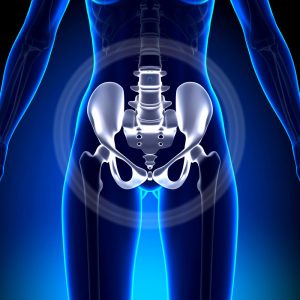Having weak pelvic floor muscles is a common cause of incontinence. Dysfunction of the pelvic floor muscles can lead to problems with bladder and rectal support.
The pelvic floor muscles are a group of muscles that play an important role in bladder control. Kari Bo, professor and exercise scientist, explains “a non-functioning pelvic floor muscle is the impairment component, and the actual leakage is a disability.” It can have a negative impact on an individual’s quality of life. Pelvic floor muscle exercises are becoming increasingly more popular for improving incontinence. However, it is easy to make mistakes when exercising the pelvic floor. Many women and men make the mistake of using their abdominal muscles instead of the pelvic floor muscles. Biofeedback therapy has been developed to help women identify their pelvic floor muscles properly.

What is Biofeedback for Incontinence?
Biofeedback is a non-drug treatment, which is why many people prefer this to alternative methods. It is most commonly used for stress incontinence, as those suffering from this have significantly weak pelvic floor muscles. It also often used for those with urge incontinence. The therapy provides you with a visual representation of muscle activity, which helps you learn how to stop using the wrong muscles and start using the correct ones. It can be used to help women learn to control and strengthen the pelvic floor muscles. By feeding back the information, the patient knows which muscles she is using.
What to Expect
During the therapy, a biofeedback therapist coaches you in the proper use of the pelvic muscles. During biofeedback, two small sensors are placed with a sticky pad on either side of your anus, as this is where the pelvic floor muscles are close to your skin. A different set of sensors are placed across the abdomen. A biofeedback therapist connects your sensors to a computer screen, where a graph is displayed of your muscles as you do the exercises. To ensure you are not using the wrong muscles, the sensors show you when you are using the stomach muscles instead of the pelvic floor muscles. The exact procedure depends on the tools that are used by the healthcare facility. Some biofeedback tools have exposed sensors that are placed inside the vagina, capture electrical activity. Others tools have sensors contained within the device that detect contractions of your pelvic floor. Don’t be embarrassed or worried about trying this therapy, as it will be beneficial in the long run! 
How Effective is Biofeedback for Incontinence?
How long it takes to achieve continence depends on how weak your pelvic floor muscles are and how much practice you do. Studies have found that biofeedback can reduce urinary incontinence by as much as 94 percent. A study tested the effectiveness of pelvic floor muscle exercises with biofeedback in reducing the length of time incontinence was experienced. Fifty-three men were assigned to an education intervention group. As a result, the individuals in the feedback group regained continence within 51 days on average. The research on biofeedback evoked so much interest that Medicare began reimbursing for biofeedback for incontinent women and men.

Pelvic floor muscles anatomy
Asking your Doctor about Biofeedback
Although it is often effective, bear in mind that there may be an alternative treatment method more suitable for you. It is vital to talk to a Doctor about your worries and the symptoms of your incontinence. They can suggest some lifestyle changes you can make as well as guiding you to the correct treatment method.
You should be prepared to tell your Doctor the following:
- Whether you’ve had any surgery
- Menstrual, sexual or bowel function problems
- If you’ve a history of urinary infection
- Your history of childbirth
- The symptoms you experience
- Whether your products are efficient
- Any medicines you are taking
Health insurance companies often do cover biofeedback therapy and can help pay for a home biofeedback unit, however plans vary. If you do want to try biofeedback, you and your Doctor should check with your insurer for guidance on biofeedback coverage.

Originally posted 2018-08-08 13:52:31.












Leave a Reply